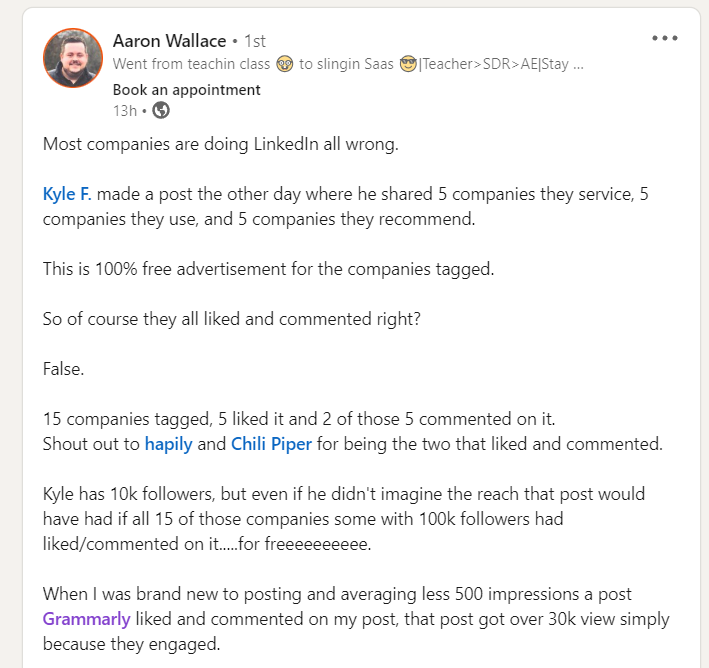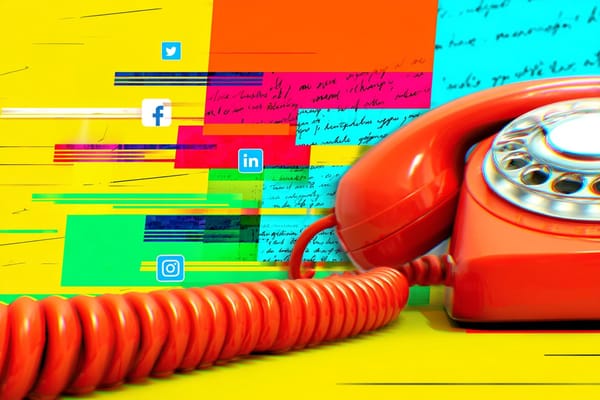LinkedIn’s “Takeaways” Feature Is a Terrible Use of Generative AI
A once-useful platform might become overrun with generic content.

I recently noticed a new feature as I was scrolling through LinkedIn. At the bottom of a post, I saw a few buttons. One said “Takeaways” and the other was different with each post.

Curious (and assuming the sparkle icon meant that AI was involved), I clicked on it.
I was completely dismayed by the results.
The AI-powered Takeaways stripped the post of anything interesting. I got a generic recap, in bullet point format, with a suggestion for me at the end, either to create my own post or explore more information.
I immediately asked myself: what is LinkedIn even doing? Who thought this was a good use of generative AI?
AI-powered takeaways remove the human story
The most engaging posts on LinkedIn tell a story. Readers connect with the post because they can relate or have learned something.
I tried the Takeaways on a post from Aaron Wallace. He told a story about tagging companies in LinkedIn posts.

The AI-powered Takeaways were bland and, frankly, useless.

Aaron’s post was engaging. It caught my attention because he shared a specific example and the results.
The AI-generated Takeaways told me very little because the original elements that “stopped the scroll” in my feed were gone.
There was an action item for me at the bottom to “create a workflow” to monitor mentions. When I clicked on this, the workflow suggestion included products like Hootsuite to do the monitoring.
However, a Google Search suggests that Hootsuite cannot do this for personal profiles. As the suggestion correctly deduced, I work with clients, but I’m not responsible for their social media at all. So the suggestion wasn’t useful.
I tried Takeaways on another post. This one was a very personal story from a woman who recently. Due to a terrible parental leave policy from her husband’s employer, he was headed back to work a mere seven days after their daughter was born. Her post was paragraphs long, lamenting the lack of good parental leave policies at many companies.
The Takeaways summarized her impassioned post with the following bullet point: “Paternity leave is a crucial support for parents and children.” It was an insult to the original post.
So what have I gained from the Takeaways? Nothing. I’ve received a shallow copy of the original post, devoid of anything compelling.
The proliferation of AI-generated content on LinkedIn
According to LinkedIn, the AI-powered Takeaways feature is being slowly rolled out to users. LinkedIn states: “This feature helps you by providing personalized takeaways, content summaries, and suggestions related to the post you’re viewing.”
Someone at LinkedIn has an odd interpretation of “helpful.”
I’ve noted that the Takeaways feature only shows up on longer posts. Understandable, since it would be hard for generative AI to summarize something short. The Takeaways button appears after the first two lines of the post, where a reader would typically click “More” to read the full post.
Does LinkedIn assume our attention spans have been reduced so much that we can’t even read a few hundred words? Will readers click “Takeaways”
instead of “More”? The summaries don’t even reduce the length by much.
In the case of Aaron’s post, the Takeaways removed the helpful part, which was his specific example and the results.
LinkedIn has started to become a cesspool for AI-generated content. It started months ago with collaborative articles, encouraging people to contribute to earn a “Top Voice” badge. Might as well gamify the experience, right?
I was skeptical the first time I was invited to contribute, especially when I noted that the conversation starters within such articles were created by AI. Because people were incentivized to contribute, they’d add their comments — even if they had no specific knowledge about the topic.
The result? A pile of garbage content. Sometimes a few gems were sprinkled into the mix from well-meaning people who wanted to contribute. But, for the most part, people were quickly adding replies to earn their Top Voice badge.
I’ve also noticed an increase in AI-generated comments on my own posts. Many people know that engaging with others is a path to growing your own audience on LinkedIn. You comment on posts, you show up in the feed, people might follow you.
But AI-generated comments are a worthless tactic. No one is going to see the generic comments and think, “Wow, that’s someone I should definitely follow.” I’ve started blocking people who leave AI-generated comments on my posts because they’re so annoying.
There is no shortcut to becoming interesting on LinkedIn. Nothing is improved through volume if that volume has nothing to say.
LinkedIn benefits from users’ interactions with AI — even if users don’t
Right now, I’m most annoyed by the Takeaways because they’re disruptive to my LinkedIn feed. Seeing them on a majority of posts makes the scrolling experience much worse.
But beyond that, I’m concerned about LinkedIn’s generative AI push. Every time we, as users, interact with AI on LinkedIn, we’re training its massive dataset.
Anyone contributing valuable content to collaborative articles has donated their knowledge to LinkedIn. Those responses can be ingested to improve generative AI in the future. LinkedIn is owned by Microsoft and Microsoft has a significant investment in OpenAI, the company behind ChatGPT.
Has LinkedIn uncovered a clever way to feed OpenAI’s large language model with additional data not found elsewhere on the internet? Microsoft would benefit in such a scenario.
Clicking on Takeaways is also undoubtedly training the AI in some way. Who clicks on it? Do they end up taking action on the suggestion at the bottom? Do they use AI further to aid in the suggestion?
I’m concerned that LinkedIn will eventually punish me for refusing to play the AI game. Will my posts be de-prioritized in the algorithm because I haven’t contributed to AI articles? Will LinkedIn favor those who click on Takeaways and follow the suggestions over those who don’t?
The wrong place for generative AI
As a professional writer, I have Opinions about generative AI as a whole.
I use generative AI to do some light brainstorming. I use it to turn my long-form articles (including Medium) into short social posts — though I rewrite the output before publishing, so it sounds like me. AI creates transcripts from my meetings and provides sentence suggestions when my writing gets wordy.
There’s definitely a place for generative AI in the world. But it doesn’t replace human ideas. And that’s where LinkedIn is getting it all wrong.
Part of what I’ve always liked about LinkedIn is the wealth of knowledge other people share. I do my part and contribute to the conversation. Some people post really unique ideas. Or have fun, engaging personalities.
LinkedIn’s Takeaways feature represents the worst type of use case for generative AI: replacing interesting content with uninteresting content. Removing the human element. It makes generative AI skeptics even more skeptical because they’ll roll their eyes and groan at the output.
I want to spend my time on platforms (like Medium) that shun the use of generative AI to create content. That value human writing. I fear that LinkedIn is headed in the wrong direction and will soon become a feed overrun with generic AI-generated posts. Robots talking to other robots.
Generative AI has its place. But replacing original content with a generic summary won’t increase or improve engagement, despite what LinkedIn seems to think.
Check out my free eBook: Manage Your Time + Content Across Multiple Platforms.





